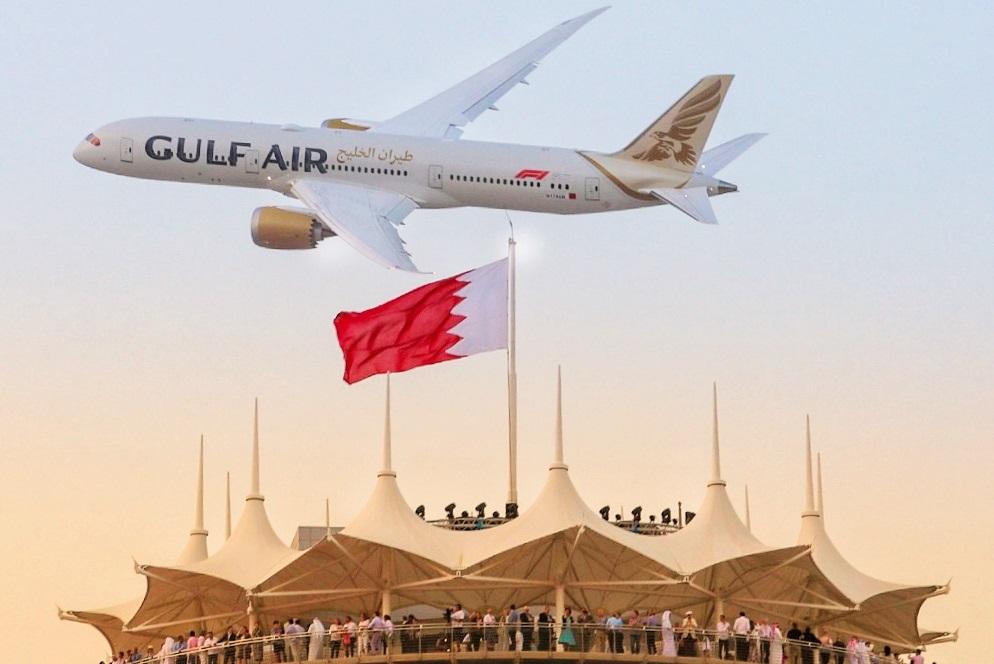
Sebastian Vettel and the Ferrari team may have emerged victorious from the Bahrain Grand Prix in April, but for many spectators the star of the show wasn’t to be seen on the Formula One track.
Before the race even got under way, Gulf Air, Bahrain’s flag carrier, had stolen the limelight with a flyover by its first Boeing 787-9 Dreamliner – a brand-new aircraft type for the kingdom and an emblem of the ambitious plan being led by CEO Krešimir Kučko, who was appointed last year with a mandate to revitalise the airline’s long-waning influence in the region.
Once the Middle East’s best known and most glamorous carrier, Gulf Air has languished in recent years as a new breed of super-connectors – Dubai’s Emirates Airline, Abu Dhabi’s Etihad Airways and Qatar Airways – aggressively takes market share from legacy rivals.
For every passenger that Gulf Air carries, Emirates transports ten. Yet with the big three Gulf carriers now facing headwinds of their own – fuelled by over-zealous growth and disputed financial claims – Bahrain’s state-owned airline is mounting a comeback.
“To compete with physically bigger airlines, you do this predominantly by the quality of your product, the quality of your service and the quality of the passenger experience,” says Kučko, who joined Gulf Air from Croatia Airlines. “So we want to deliver best-in-class products and services in both our Dreamliners and Airbuses.”
Niche premium operator
Helped by parallel investment at Bahrain International Airport – which Kučko wants to become the “fastest connection hub in the region” – Gulf Air is being reinvented as a niche premium operator with the best, as opposed to the biggest, network in the Middle East. And although management has no intention of creating a mega-carrier, it is still shifting gears with a long-awaited return to growth.
This article first appeared in Routes News edition 3 2018
Passenger numbers at Gulf Air have fallen by almost 10 percent since 2008 – its first year as a solely Bahraini enterprise – amid a series of restructuring plans and network retrenchments. As well as carrying fewer people than it used to, the airline isn’t taking them as far. Revenue Passenger Kilometres (RPK), a measure of traffic that factors in the distance travelled, has fallen by 30 percent over the decade.
“Definitely, for 2018, the focus is on revenue growth more than cost-cutting because cost-cutting is something that you need to do anyway. It is an ongoing process,” Kučko explains.
“The imperative is revenue growth, expansion of the network, going back to the places where we have been before and going forward to the places where we have never been.”
Much of the groundwork for Gulf Air’s new strategy was laid by Maher Salman Al Musallam, Kučko’s predecessor, who steered the airline for five years until retiring last summer. Under his leadership, Gulf Air cut annual losses from a high of BHD196 million (Bahraini dinar) in 2012 to just BHD24 million in 2017 – an 88 percent improvement.
Flag carrier benefits
While Gulf Air remains lossmaking on paper, its headline earnings do not reflect the macro-economic benefits that Bahrain receives from operating a well-connected, scheduled flag-carrier. As a tiny Gulf island with a population of just 1.5 million – most of whom are foreign nationals – air connectivity is vitally important to Bahrain’s social, economic and political standing.
Experience has taught the kingdom that it cannot rely on foreign airlines for overseas links: only eight passenger airline groups from outside the Middle East and Turkey fly to Bahrain (British Airways, Lufthansa, KLM, Cathay Pacific, Ethiopian Airlines, Air India, Jet Airways and SriLankan Airlines).
“It’s irrelevant, in a way, if one part of the value chain that relies on airlines isn’t making money,” Kučko says when asked about the potential cost of returning Gulf Air to growth.
“What matters is if the whole system is profitable and bringing what is expected and needed for the kingdom to promote the interests of the country, in terms of connectivity and being one of the key generators of economic growth.”
Emphasising that the airline fulfils its role in a “more successful and brighter way” than it used to – as evidenced by the financial turnaround – the CEO is now launching his own five-year business plan. Gulf Air’s new Dreamliners will kick-start the programme in dramatic fashion.
In June, the first unit will be deployed on its twice-daily service to London Heathrow Airport. Another four of the wide-bodies will enter service by the end of the year, followed by two more in 2019 and the final three in 2020. The next-generation, US-made aircraft – configured with 26 seats in Business Class and 256 in Economy – will gradually replace Gulf Air’s existing fleet of Airbus A330s.
A parallel order with the European manufacturer also covers 17 A321neos and 12 A320neos, with the first two units arriving this year and the final deliveries expected in 2023. Gulf Air is already an A320-family operator.
Kučko is wasting no time in putting the metal to good use. Eight new stations are opening this summer: Bangalore and Calicut in India; Abha and Tabuk in Saudi Arabia; Alexandria and Sharm El Sheikh in Egypt; Casablanca in Morocco; and Baku in Azerbaijan. That will lift the airline’s global footprint to 50 cities when including home base Manama.
Flights are already operated from the Bahraini capital to 16 points in the Middle East, including Cyprus and Turkey; 15 in the Indian subcontinent; six in Europe and the Caucasus; two in the Far East and two in Africa. And with firm orders for 39 aircraft – versus a pre-existing fleet of 28 jets – growth will be a sustained theme throughout the business plan.
“It’s like drawing a circle around the hub of Bahrain,” Kučko explains. “We start by consolidating our home market – the GCC [Gulf Cooperation Council] and the Middle East region – so increasing frequencies on existing routes is one of the strong points. We are also getting stronger in the Indian subcontinent, and this year we are touching Africa and going further into Asia with Baku.”
He identifies Saudi Arabia and Turkey as two nearby countries that are “on the radar” for growth. Saudi Arabia was already the airline’s largest market by seating capacity prior to its latest additions, with Dammam and Riyadh each served five times daily; Jeddah four-times daily; and Qassim and Medina approximately once daily.
Asked about the possibility of resuming flights to Iran – which used to be a major market for Gulf Air before relations between Manama and Tehran soured in 2011, Kučko stresses that the flag-carrier must move in step with its government owner.
“We are aligned with the different political, economical and social priorities of Bahrain,” he says. “When, and if, there is a framework that allows us to spread, of course it’s something that would be considered with proper attention.”
Bahrain and Saudi Arabia have both closed their air corridors to Iran, accusing the Islamic Republic of stoking regional unrest. Flights from the two countries to Qatar have also been grounded because of its perceived support for Iran.
Further afield, another frontier will open in 2019 when Gulf Air turns its focus to Europe after years of cutbacks on the continent. “We are definitely going to explore this next year,” Kučko confirms. “The routes we are thinking of are more towards south Europe. That should be complementary to the present routes, so we are talking Spain, Italy.”
North American ambitions
Subsequent developments will likely include the launch of connecting flights between Africa and China. But the “biggest jump in the network” will not come until the end of the five-year plan, when Gulf Air hopes to be operating long-haul flights to North America.
Success there depends on progress in building a “sufficient and sustainable feeder network” to bolster demand, Kučko notes. With growth being targeted on so many fronts, the CEO is adamant that partnerships should also play a role in the airline’s future – ideally under the umbrella of alliance membership.
Gulf Air stepped up its codeshare strategy last year by signing agreements with Turkish Airlines and Aegean Airlines – both Star Alliance members – as well as with independent carrier Oman Air. It also has an agreement with SkyTeam’s Saudia. But its cooperation with American Airlines, a Oneworld member, was being wound down at the time of writing.
“We are going to work on new codeshares for this year,” Kučko confirms. “This is definitely in our focus. And we are looking for global alliances… joining a certain alliance speeds up the process of making your global footprint.”
However, we will have to wait and see whether or not any new such teams prove to be as successful as Ferrari was in Bahrain in April.

